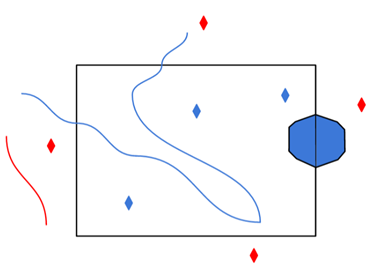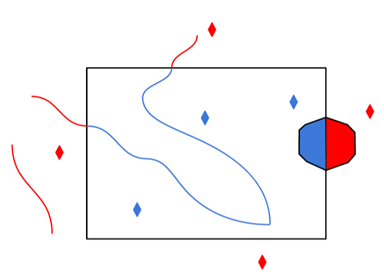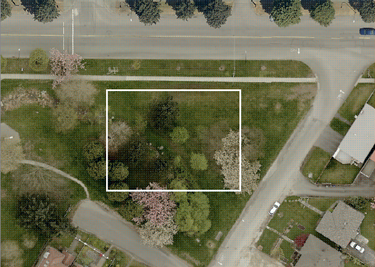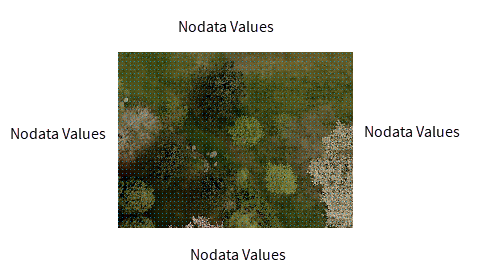Connection
The host or URL for the ArcGIS Portal. For example:
https://arcgis.example.com/portal
The mechanism used to authenticate with the ArcGIS Portal. The available options are:
- Generate Token – Obtain an ArcGIS Token from the server using a given username and password. This is the default.
- Basic – HTTP Basic authentication.
- Digest – HTTP Digest authentication.
- NTLM – Also known as Integrated Windows Authentication (IWA). Authenticates using a given username and password.
- Kerberos – Also known as Integrated Windows Authentication (IWA). Authenticates as the current Windows user. This option is supported only on Windows systems connected to a domain.
- Web Service – Use an OAuth 2.0 Web Service and Connection, or a token Web Service and Connection. Organizations with SAML or federated login should use an OAuth 2.0 Web Service.
- To configure an OAuth Web Service for your Portal, refer to the instructions in the Esri ArcGIS Portal Web Service template included with FME. (From FME Workbench, open FME Options > Web Connections and click the Manage Services button. Navigate to the Esri ArcGIS Portal template.) Otherwise, a token Web Service can be created which will use a username and password to generate a token.
If the Authentication Type is Web Service, specify the Web Connection to use.
If the Authentication Type is Generate Token, Basic, Digest, or NTLM, specify the username.
If the Authentication Type is Generate Token, Basic, Digest, or NTLM, specify the username.
Feature Service
This parameter specifies the Feature Service from which to read layers (feature types). You can click the Browse button to obtain a list of all Feature Services accessible by the current user. A connection window appears while the system browses all accessible folders and groups for Feature Services. Only one Feature Service may be selected.
This parameter takes the form of “folder or group name/feature service name”, and optionally suffixed with the Feature Service item ID if the name is ambiguous.
The Feature Service’s item ID is alphanumeric. The provided name and/or ID must match a Feature Service item on ArcGIS Portal.
Constraints
After you have entered a valid Feature Service, click the Browse button to select layers or tables for import. A connection window appears while the system retrieves a list of layers and tables from the selected Feature Service.
Once the layer list appears, you can select one or more layers or tables, and then click OK to dismiss the window. Their name(s) will appear in the Layers parameter.
This parameter specifies whether to add a label attribute for each coded domain attribute on the layer. For instance, the coded domain attribute foo would result in an extra attribute foo_resolved that contains the label corresponding to the coded value of the foo attribute.
ArcGIS Feature Service writers automatically recognize label attributes when working with existing Feature Services. If a valid label value is provided, and no value was provided for the corresponding coded domain attribute, then the coded domain attribute is set based on the label value. If there is no corresponding coded domain attribute, then the label attribute is treated as a regular attribute.
Enable this option to work with the Version Management Server.
Version Name
The name of the Branch Version to read.
Click the Browse button to list the available Branch Versions for the selected Feature Service.
Version Data to Read
The type of versioned data to read. Select one of:
- Features – Read the features on the selected Branch Version.
- Differences – Compare the selected Branch Version against the DEFAULT version. The resulting features have the fme_db_operation format attribute with a value of “insert”, “update”, or “delete”, corresponding to the type of difference.
Schema Attributes
Use this parameter to expose Format Attributes in FME Workbench when you create a workspace:
- In a dynamic scenario, it means these attributes can be passed to the output dataset at runtime.
- In a non-dynamic scenario, this parameter allows you to expose additional attributes on multiple feature types. Click the browse button to view the available format attributes (which are different for each format) for the reader.
This parameter controls how field aliases are used.
-
None – (default value) Field aliases are ignored.
-
Replace Attribute Names with Aliases – (only applicable when adding a Reader) Attributes on feature types will be named for their aliases rather than their official names. An arcgisfeatureservice_feature_type_alias attribute will be included on each feature. Use this mode when the target format should create feature types using the aliases as attribute names.
NoteTo change the alias mode after you select Replace Attribute Names with Aliases, remove the reader from the canvas and re-add it with your preferred alias mode setting.
- Expose Aliases as Metadata Attributes – For each attribute read, a second <name>_alias attribute will be added that stores the alias for the attribute in question. An arcgisfeatureservice_feature_type_alias attribute will also be included on each feature. Use this mode when the target format is a Feature Service format and the aliases should be preserved during feature type and table creation.
If you want to make changes after you select Expose Aliases as Metadata Attributes, you can only change the setting back to None. To change the alias mode to Replace Attribute Names with Aliases, remove the reader from the canvas and re-add it with your preferred alias mode setting.
Spatial
Coordinate systems may be extracted from input feature data sources, may come predefined with FME, or may be user-defined. FME allows different output and input coordinate systems, and performs the required coordinate conversions when necessary.
If a coordinate system is specified in both the source format and the workspace, the coordinate system in the workspace is used. The coordinate system specified in the source format is not used, and a warning is logged. If a source coordinate system is not specified in the workspace and the format or system does not store coordinate system information, then the coordinate system is not set for the features that are read.
If a destination coordinate system is set and the feature has been tagged with a coordinate system, then a coordinate system conversion is performed to put the feature into the destination system. This happens right before the feature enters into the writer.
If the destination coordinate system was not set, then the features are written out in their original coordinate system.
If a destination coordinate system is set, but the source coordinate system was not specified in the workspace or stored in the source format, then no conversion is performed. The features are simply tagged with the output system name before being written to the output dataset.
For systems that know their coordinate system, the Coordinate System field will display Read from Source and FME will read the coordinate system from the source dataset. For most other input sources, the field will display Unknown (which simply means that FME will use default values). In most cases, the default value is all you'll need to perform the translation.
You can always choose to override the defaults and choose a new coordinate system. Select More Coordinate Systems from the drop-down menu to open the Coordinate System Gallery.
Changing a Reprojection
To perform a reprojection, FME typically uses the CS-MAP reprojection engine, which includes definitions for thousands of coordinate systems, with a large variety of projections, datums, ellipsoids, and units. However, GIS applications have slightly different algorithms for reprojecting data between different coordinate systems. To ensure that the data FME writes matches exactly to your existing data, you can use the reprojection engine from a different application.
To change the reprojection engine, Select Workspace Parameters > Spatial > Reprojection Engine. In the example shown, you can select Esri (but the selection here depends on your installed applications):
- The coordinate systems file coordsys.db in the FME installation folder contains the names and descriptions of all predefined coordinate systems.
- Some users may wish to use coordinate systems that do not ship with FME, and in those cases, FME also supports custom coordinate systems.
- Learn more about Working with Coordinate Systems in FME.
A search envelope (also known as a bounding box) is a rectangular area that defines a geographic area. In FME, the easiest way to define a search envelope is to use search envelope parameters.
Defining a search envelope is the most efficient method of selecting an area of interest because FME will read only the data that is necessary – it does not have to read an entire dataset. Search Envelope parameters apply to both vector and raster datasets and can be particularly efficient if the source format has a spatial index.
Most FME readers have parameters to define the search envelope of data that is being read:
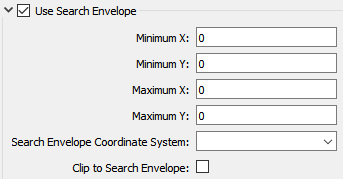
The parameters include the x and y coordinates of the bounding box as well as a parameter that defines the coordinate system.
How to Define the Bounding Box
Using the minimum and maximum x and y parameters, define a bounding box that will be used to filter the input features. Only features that intersect with the bounding box are returned. Note that the bounding box intersection is not a full geometry intersection (based on spatial relationships) that would be returned by a transformer like the SpatialFilter.
|
Search Envelope Coordinate System |
Specifies the coordinate system of the search envelope if it is different than the coordinate system of the data. The coordinate system associated with the data to be read must always be set if this parameter is set. If this parameter is set, the minimum and maximum points of the search envelope are reprojected from the Search Envelope Coordinate System to the reader’s coordinate system prior to applying the envelope. |
||||||
|
Clip to Search Envelope |
The underlying function for Use Search Envelope is an intersection; however, when Clip to Search Envelope is checked, a clipping operation is also performed.
|
Advanced
This parameter specifies the maximum number of features that may be present in a single response from the server. Reduce this value if reads are failing due to timeouts.
The value for this parameter is capped to the maxRecordCount property on the Feature Service.
Default: 1000
Prior to FME 2022.0, web access through this format would automatically disable HTTPS Certificate verification when an SSL Error was received from the server. Now, this behavior must be explicitly enabled or disabled by this parameter.

